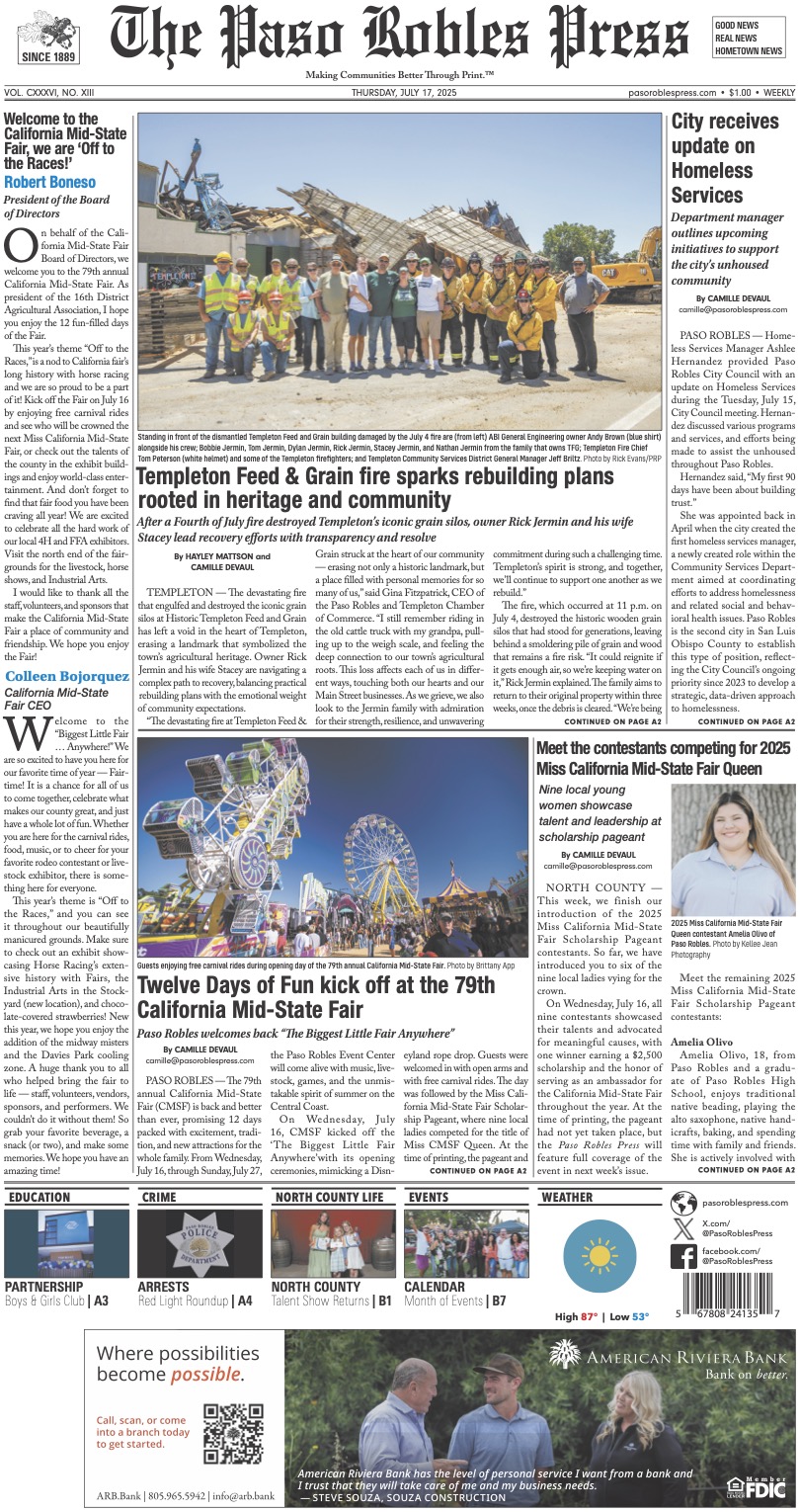A new year looms. So as we take a cup of kindness yet for auld lang syne, let’s look forward to what wines may go into that cup in the coming year. What are some of the wines and winemaking techniques trending for 2019? The year passing gave us a few hints.
How about pétillant-naturel, alternative cooperage – aging wines in tequila and bourbon barrels, wine in cans and under-the-radar varieties like teroldego, lagrein, tannat, touriga nacional, carignan, counoise and nebbiolo? How about lesser known yet vibrant, “sunshine style” whites such as ugni blanc, picpoul blanc clairette blanche, albariño, arneis and verdelho? Certainly chenin blanc, long considered “jug fodder wine,” is gearing up for a comeback.
So what’s in your bottle?
Let’s start with fizzy pétillant-naturel — pét-nat for short. As this ancient process of producing sparkling wine has gained traction in the past few years, thanks to the “pét-natties,” this lively, low-alcohol sparkler is poised to become all the rage in 2019.

Lineup of Paix Sur Terre white wines
“It’s an inexpensive and easy way to get into sparkling wine,” said Jason Bushong at his namesake downtown tasting room as he poured his strawberry-scented, rose-colored grenache and syrah blend of pét-nat.
What is pét-nat?
Less fizzy than a traditional Champagne or sparkling wine, it’s made in the way of méthode ancestrale as opposed to méthode Champenoise (or traditionnelle). Pét-nat is bottled before primary fermentation is finished without the addition of yeast and sugar, a process typical to the production of Champagne and other sparkling wines. It can be made as a red, white or Rosé style wine. It was Paso winemaker Andrew Jones, founder of Tin City’s Field Recordings winery, who launched pét-nat few years back. Now others such as Mike Sinor of Sinor-LaVallee have joined in.
Wine in cans? Tudor Wines’s Nacina is a refreshing, sparkling dry Riesling made by owner/winemaker Dan Tudor. What he offered on tap during the summer heat spike evolved into simply different packaging.
“It was popular and convenient to sell in cans,” said Tudor at his downtown tasting room. “It’s low in alcohol and millennials love it.” The marketing convenience could well set a trend.
In Paso itself, sparkling wine is definitely on the rise, largely due to the availability of Rava Winery’s state-of-the art facility that is being utilized by a number of winemakers.

Rava Wine’s Humble Red
“We have sparkling wine customers from all over California and as far away as Texas,” Lauren Rava informed me by email. “I currently have 15 active customers for our 2018 Tirage.” Besides Rava, other Central Coast producers making impressive sparklers include Laetitia, Serrano, Deovlet-McPrice Meyers, Vino Vargas and Thacher.
As for lively whites, Monochrome, Vigo Cellars, Avenales Ranch, Seven Angles, Volatus, Tablas Creek Vineyards, Four Lanterns, Paix Sur Terre and Grey Wolf are among those producing standouts.
In Paso’s Tin City, gaining speed as a trendsetter, winemakers are not just bottling obscure varieties but experimenting with vinification techniques. Take Dave McGee, owner/winemaker of Monrochrome, dedicated to whites only. McGee’s white production ranges from crisp wines to rich ones with a lush mouthfeel. He has also embraced and elevated chenin blanc to a respectable level blending it with different varieties such as chardonnay and sauvignon blanc.
What began as experimental vinification evolved into McGee’s model. He calls it “experimental ingredients” — multiple iterations of producing, say, a 100 percent chardonnay. McGee ferments the juice from the same vineyard but in different barrels (or amphoraes), each one with different temperatures and yeasts (native or cultured), clarified or straight from the press. The goal is to blend the same juice yet vinified differently in each barrel.
“It’s a huge benefit having that diversity to work with,” McGee explained, “and the opportunity to layer in lot more things and bring in subtle elements to the wine give it more complexity.”
One street over, Vailia From, owner/winemaker of Desperada Wines, also vinifies her flagship sauvignon blanc, Fragments, in different vessels before blending. “Sauvignon blanc is a staple,” said From of her 2,000 case production of this varietal. For the 2018 vintage she is also embarking on bottling chenin blanc.

Vailia From
In the red wine slot, blends are getting more eclectic. Susan Mahler (aka SAM), owner/winemaker of Cypher Winery, crafts TNT, a complex blend of tannat and tempranillo. Meanwhile Portuguese varieties such as touriga nacional and tinta cão are becoming popular companions to Rhône blends, according to SAM.
Ditto that for Italian varieties. Janis Denner, owner of Pelletiere Estate in Paso, is among those carrying the Italian flag, producing wines such as montepulciano, lagrein, sangiovese and nebbiolo. Rava Winery, on the other hand crafts the ripe and vibrant Humble Red, a blend of teroldego, primitivo and nebbiolo.
“Nebbiolo is the new pinot noir,” asserts Chris Kern, a principal at Kern Wine dDistribution company. “It’s just as difficult to grow and produce but more readily accessible to Paso winemakers.”
On the trends list, you will see white pinot noir (Windward Vineyard is bottling its 2018 vintage); value-packed chardonnay and pinot noir from Monterey County; and an overall move toward low alcohol and restrained opulence. The hi-octane wines could well be eclipsed in changing tastes by high acid, food friendly wines.
Carbonic maceration is yet another process gaining interest. Ryan Pease, owner of Paix Sur Terre and winemaker at Grey Wolf, is going full speed ahead producing mourvedre in this style, where whole cluster grapes are placed inside a tank and the juice is produced from the weight of the grapes. This fermentation originally started in urban hipster wineries in the Bay area said Pease.
“The whole berry fermentation creates extremely high carbon-dioxide environment as a result of that,” he explained. “Fermentation happens in the berry instead of around the berry, so you’re not pulling out all the tannin and structure of the grape, and you get this lively juicy character and fresh feel to the wine.”
This ancient technique used in making Beaujolais wine would not have been accepted by consumers 10 to 12 years ago, Pease noted. But consumer interest has changed. “It allows us producers to push the envelope and we can now do what we considered to be kinda geeky things.”
A decade ago Paso, winemakers made the typical Rhône blend, cabernet sauvignon or zinfandel. “It was a safe way to ensure you can sell your wine,” Pease commented. But now varietal wines such as tannat (Volatus Wines), terodelgo (Bevela Wines), counoise (Tablas Creek) and carignan (Ranchero Cellars) are trending. As for under the radar whites, at the Paix Sur Terre tasting room, visitors can taste clairette blanch, ugni blanc and picpoul blanc.
So are these free-spirited winemakers simply experimenting or setting trends?
“The trend-within-the-trend is a move towards obscure, unusual varietals,” said Doug Minnick, owner/winemaker of Hoi Polloi Wines in Newhall. “In essence, an anti-trend, where small winemakers do whatever the heck they feel like, no matter what anyone else is doing.”











